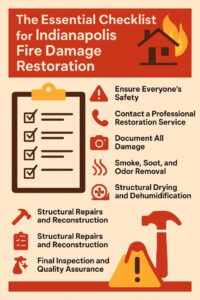Polynucleotides treatment has emerged as one of the most promising innovations in regenerative aesthetics and dermatology. Known for revitalising skin at the cellular level, this non-invasive injectable therapy harnesses DNA fragments derived from salmon to stimulate tissue repair, boost collagen production, and deeply hydrate the skin. But what can you realistically expect before and after the procedure? This article walks you through every stage, helping you make informed decisions.
🔍 Before Polynucleotides Treatment
-
Consultation with a Specialist
Your journey begins with a consultation with a certified aesthetic practitioner or dermatologist. During this session, you’ll discuss your skin concerns—whether it’s dullness, fine lines, acne scarring, or under-eye hollowing. The practitioner will evaluate your skin condition and medical history to determine whether you’re an ideal candidate for polynucleotides treatment. -
Preparation Guidelines
Though it’s minimally invasive, there are some standard pre-treatment guidelines:
-
Avoid blood thinners like aspirin or ibuprofen 48 hours before the procedure.
-
Refrain from alcohol and intense sun exposure.
-
Disclose any ongoing medications or skin conditions.
These steps help reduce the risk of bruising or irritation post-procedure.
-
Setting Expectations
Polynucleotides are not a “quick fix.” They work by gradually enhancing the skin’s structure and moisture levels. Visible results often appear after two to three sessions spaced two to four weeks apart. Patience is key—results build progressively as cellular regeneration takes place.
💉 The Treatment Itself
Polynucleotides are administered via microinjections, often using a fine needle or cannula. The practitioner may apply a topical numbing cream beforehand for added comfort. The procedure typically takes 20–30 minutes depending on the treatment area, with the under-eye, neck, and cheeks being popular zones.
Mild swelling, redness, or tiny injection marks are normal immediately after the procedure, but these usually subside within 24–48 hours.
🌟 After Polynucleotides Treatment: What to Expect
-
Immediate Post-Treatment Phase (0–48 hours)
-
Minor swelling, redness, or slight bruising may occur, especially in sensitive areas like under the eyes.
-
You’ll be advised to avoid heavy exercise, sauna, or alcohol for 24 hours.
-
Applying ice packs and keeping the area clean can aid recovery.
-
First Week
While some hydration and plumping effects might be visible within a few days, don’t expect dramatic changes yet. Behind the scenes, the polynucleotides are working to rejuvenate skin by:
-
Stimulating fibroblasts (cells that produce collagen and elastin),
-
Promoting angiogenesis (formation of new blood vessels),
-
Enhancing cellular turnover.
-
Long-Term Results (2–6 weeks)
This is when the magic becomes evident. You may notice:
-
Improved skin elasticity and firmness
-
Reduction in fine lines and wrinkles
-
Brighter, more even-toned complexion
-
Smoother texture and better hydration
Under-eye areas typically see a reduction in hollowness and dark circles, giving a fresher, more youthful appearance.
🔄 Maintenance and Longevity
For optimal results, a course of 3–4 sessions is often recommended, followed by maintenance treatments every 4–6 months. Lifestyle habits like good hydration, sun protection, and a balanced diet can extend the benefits of polynucleotides.
🧴 Can It Be Combined with Other Treatments?
Yes, polynucleotides pair well with other skin therapies such as microneedling, PRP (platelet-rich plasma), or laser resurfacing. Combining treatments can accelerate skin regeneration and offer more pronounced improvements, especially for mature or damaged skin.
💭 Final Thoughts
Polynucleotides treatment is a powerful solution for anyone seeking natural-looking skin rejuvenation without going under the knife. While not an overnight miracle, it offers cumulative, long-term benefits that enhance your skin from within. By knowing what to expect before and after treatment, you’ll be better prepared to enjoy its full potential with realistic expectations and optimal results.









